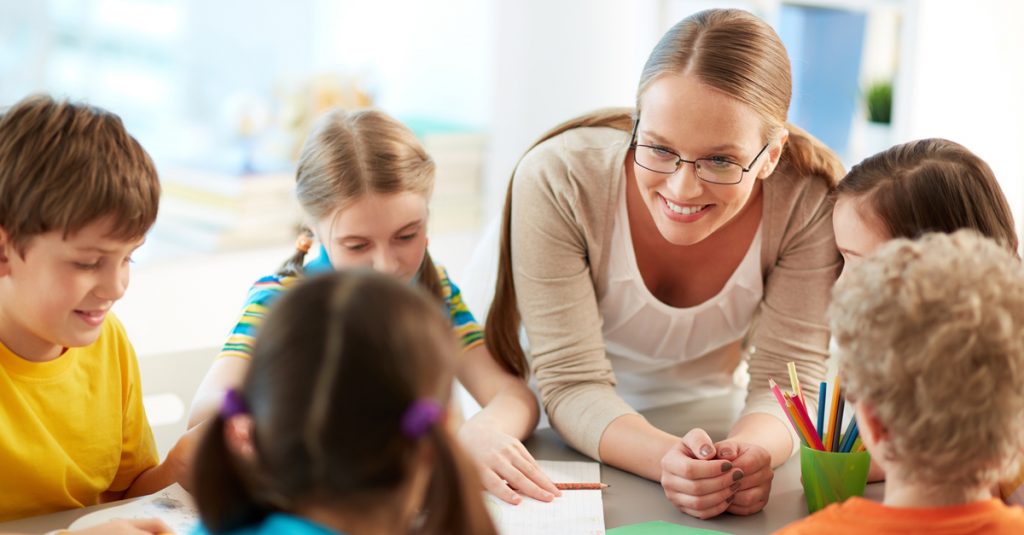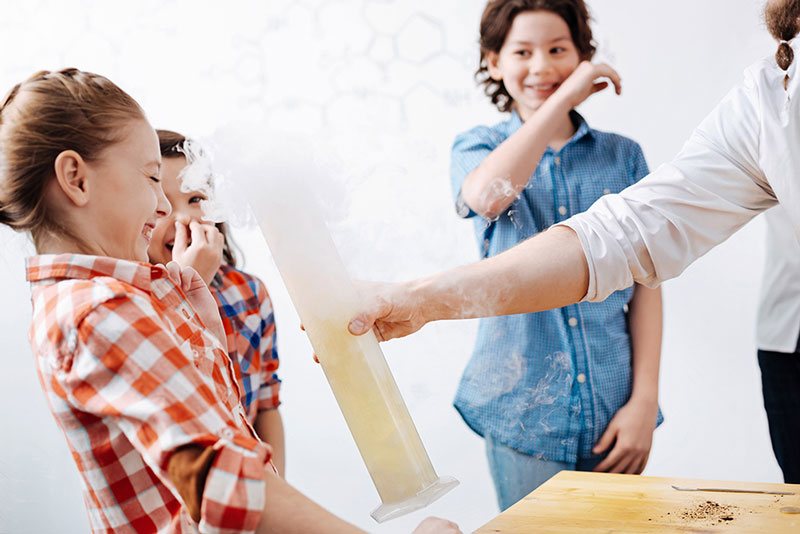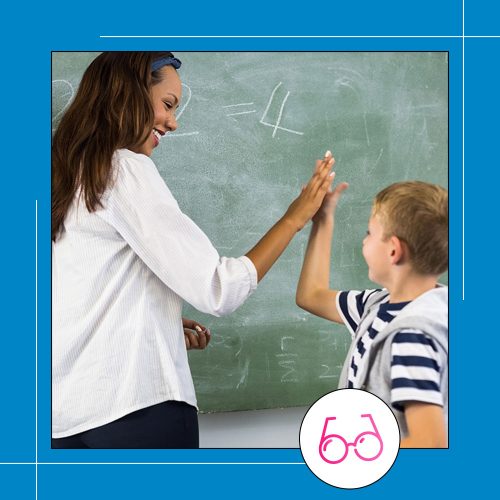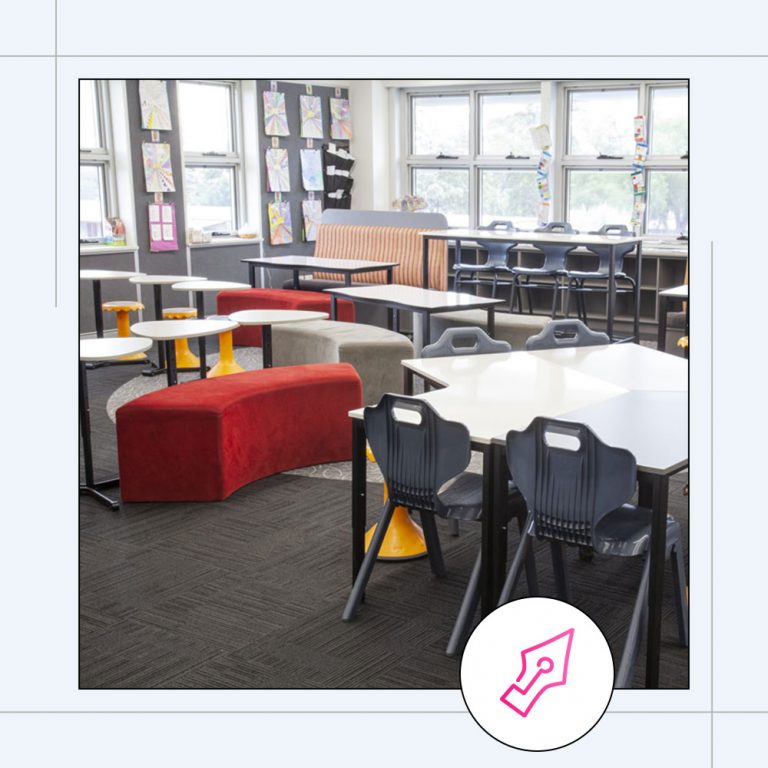The best teachers know the secret to connecting with their students is building positive relationships with them.
They understand that the key to unlocking their student’s academic potential is opening them up to the idea of asking for help.
School can be a socially and academically daunting time, no matter the age of the student. Every class will have a mixture of class clowns, backseat bandits, pot stirrers and silent observers.
The classroom should be a fun and supportive learning environment for all students. They will never put their hand up if they don’t feel like they can trust their peers or their teacher to back their ideas.
Some teachers are naturals at building a rapport with students. Some are funny. Some are witty. Some are really in-tuned with their student’s interests. With a little practice and with the help of a few easy activities, any teacher can connect with their students.
1. Use Positive Affirmations
Positive affirmations can be a fun and easy way for teachers to let their students know they care about them. It can help them realise their self-worth, change negative thinking, encourage a growth mindset and generally feel good about themselves.
They’re more effective when they’re personal but there are plenty of example affirmation cards on Pinterest.
Teachers can laminate them and slip them to their students when giving back their grades.
Or let them create and decorate their very own affirmation box. Students will get into the habit of checking them often. It can be a class activity where students write affirmations for themselves, their friends and even for their teacher.
2. Bring Laughter into the Lesson
It’s okay to clown around students from time to time. Injecting some humour into lessons, especially relatable humour can be a good thing. It can feel like such a reward to get a particularly resistant student to crack a smile.
There are a few simple things you can incorporate into the lesson to get a giggle:
Joke of the day – buy a joke book and write one up on the board every day or read it aloud (puns and classic dad jokes are sure to crack a smile, even an exasperated one)
Be weird – wear a statement hat, an ugly tie or fake moustache every so often. You’ll get a giggle at the very least. Maybe a few funny looks from other faculty. It’s worth it.
Use funny voices – any change pitch wakes students up from their daily trance. Impressions are great. Bad impression are better.
Play improv games – getting students up and moving acting out concepts and scenarios lets them be creative and gets the whole class laughing.

3. Incorporate Your Students’ Interests in Lessons
A teacher’s biggest challenge is knowing how to engage students in the learning process.
It’s easier than you think.
Often in the first week of school ‘get to know you’ and ice breaker games are played to discover student’s interests, hobbies and favourite activities (We have tones of ideas and games on our Pinterest).
Once a teacher has gathered all the data from their student’s responses, whether it’s by memory or by writing it down. It can be used it in lessons to engage them in the content being taught.
Use student’s names when making up questions on the board…
Better yet, use their names in conjunction with a problem relating to their favourite activities, foods, TV shows or hobbies. Or just simply use the characters and scenarios from their favourite TV shows. It can be creative way to illustrate a concept and make it more relatable at the same time.
Naturally their interest will be piqued and they are more likely to pay attention. Students will also be delighted that their teacher remembered something unique about them.
Teachers could even use their own interests and hobbies in problem solving questions as well. For as hungry as students are to see the things they love being used in the classroom, they’ll grow hungrier to know more about their teacher since they are making the effort to get to know them.
4. Share Stories
Teachers often find that telling a story about their childhood or an interesting part of their life can help capture their student’s attention and connect with them.
Storytelling can also be a powerful tool to get students engaged in a topic. Teachers can use a story to illustrate a concept or introduce a new topic.
After all, Storytelling is the oldest form of teaching.
Here are 10 tricks anyone can use to become a good storyteller:
- Alternate the rhythm, pace and tone
- Maintain eye contact
- Use hand gestures or diagrams
- Pause every so often for effect
- Use sensory language (colours, taste, smell, sound)
- Ask thought provoking questions
- Relate the story back to the concept being taught
- Keep it short. No more than 3-5 minutes.
- Use facial expressions for emotions
- Use props

5. Give Students Choices
When students are empowered to make their own choices about how they learn or even where they learn, teachers may find them more willing participants in class.
Yes, it is true that teachers still need to be the ultimate decision makers in the room. Think of this act as an opportunity to step aside for a few moments and watch students grow as learners and responsible individuals.
Giving students choice lets them know their teacher respects and trusts their ability to make smart decisions for themselves.
- Let them choose people they work well with when forming groups.
- Let them arrange the furniture how they want into dedicated Connect Zones
- Brainstorm with them a list of topics/concepts they want to know more about
- Give them homework choices rather than setting the same questions
- Create a suggestion box they can regularly drop suggestions or ideas into and follow through with them
Above all, teach with passion and enthusiasm. Just as a yawn, a smile or a laugh is contagious . . . . . so is a teacher’s enthusiasm!
Students are more likely to be engaged and interested when a teacher is passionate about the content they are teaching. If you are not excited to teach the content, why should your students be excited to learn it?
Bonus Tip: Make Up a Personalised Handshake
This teacher knows what’s up. Making up a unique handshake with each student seems like a big effort. Especially memorising each one! But it could be well worth the effort to pump them up before class and create a special bond with each one.











